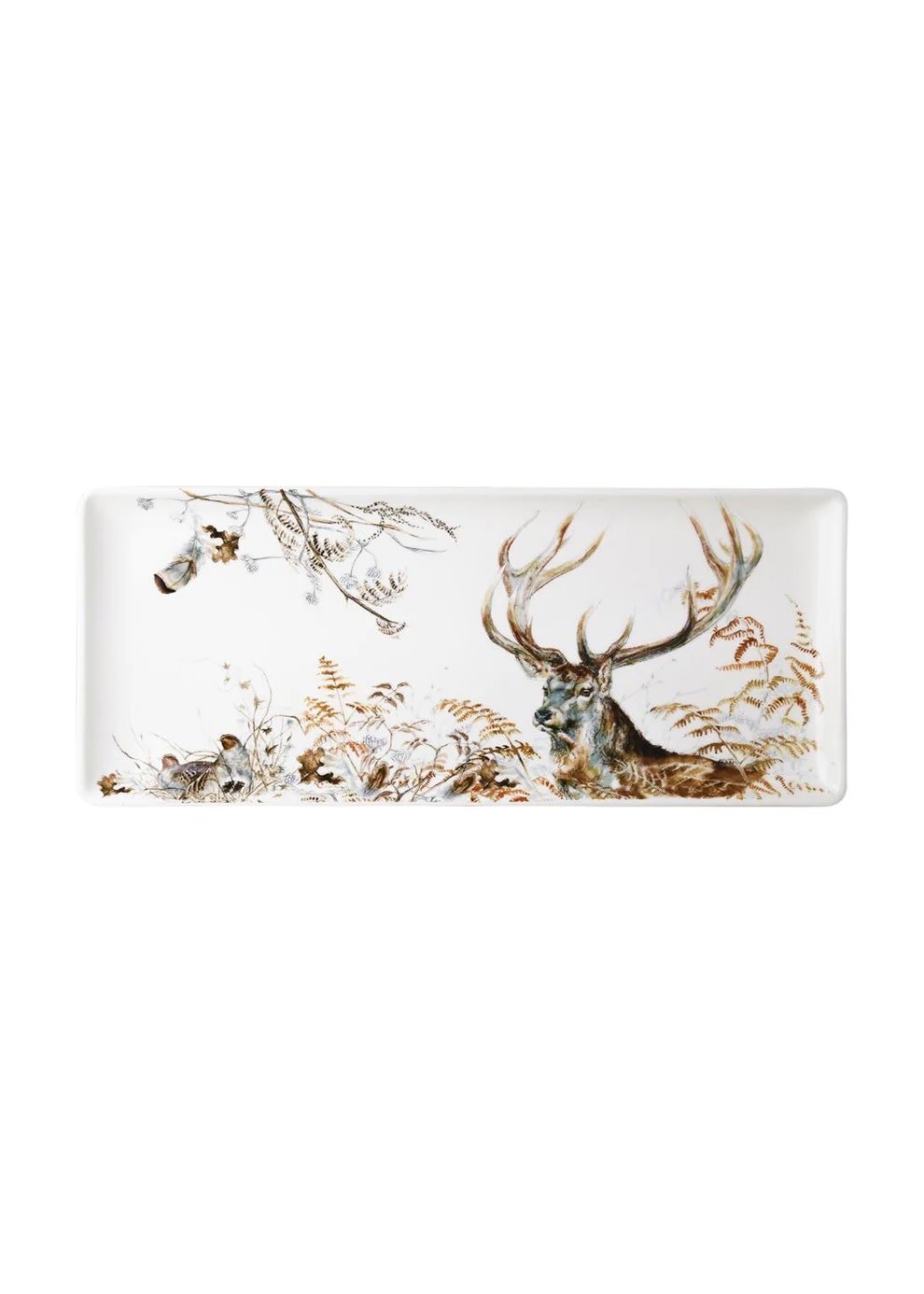Sologne - Oblong Serving Tray Stag
Sologne - Oblong Serving Tray Stag
Couldn't load pickup availability
Artist Estelle Rebottaro
Named after the thickly wooded forests of Sologne, this enchanting collection lets us peek into a region known as the hunting ground of French kings for centuries. Each detailed composition, rendered with vivid realism, captivates with graceful fauna tucked amidst the forest’s grassy marshes and deep woods. An original take on a classic 18th century style, finished in an inviting palette of earth hues.
- handmade in France
- Material: Faience
- 15.5" x 6"
- Care: Dishwasher safe. Microwave use recommended only for quick reheating; not for defrosting or cooking.
The Story Behind Gien
Faïencerie de Gien, near the Loire Valley, has crafted fine faience tableware since 1821. Each piece is made using traditional techniques by skilled artisans, ensuring high quality and authentic French countryside designs. The entire process, from raw clay to finished product, happens in Gien, reflecting over 600 years of combined craftsmanship. This expertise guarantees genuine, warm, and creative faience with every item.
Each piece of Gien passes through the hands of 30 different master craftsmen and women. Each pair of hands applies the skill of roughly 20 years of practice. So each single item is treated with 600 years of know-how ! 600 years resulting in faïence bearing the stamp of Genuineness, Warmth and Creativity.
The Process
biscuit production
Clay paste, plaster casts and glazes are all designed and created at the Faïencerie using traditional undisclosed recipes. It takes no fewer than 14 different types of earth to forge a piece of Faïence, and the specifications of the mixture are still today one of Gien’s closely kept secrets. Hollow shapes are then fitted with additional features such as handles, spouts… and glued on with a specially formulated type of slip. After drying and firing at 1 160°C, the piece then becomes “biscuit”. Pieces are hand crafted, using the pouring method for casting hollow shapes such as teapots, and pressure casting for flat pieces such as plates.
chromo decoration
Chromolithography : the pattern on a chromo is applied by hand to a white glazed piece.
After firing, the pattern becomes fast.
hand-painting
This requires a high level of expertise and is reserved exclusively for prestige pieces. The outline of the pattern is printed by hand using 18th century techniques with engraved copper plates. The piece is then painted by hand. It takes at least 3 years to acquire the skills necessary for this method.
smoothening
When dry, pieces are smoothened and evened off with a sponge to give them a faultless “finish”. They are then kiln-fired at a temperature of 1160°C.
glazing
Last but not least comes glazing. This is what brings such radiance and shine to the finish, enhancing the beauty of the pattern’s colors.
It plays a defining role in the choice of a design. During firing at 1060°C, the glaze vitrifies, thereby sealing and intensifying the brightness of color
firing
During firing at 1060°C, the glaze vitrifies, thereby sealing and intensifying the brightness of color.


